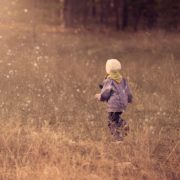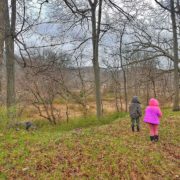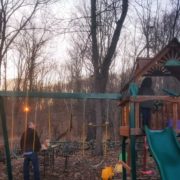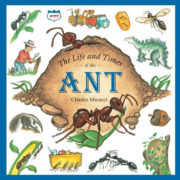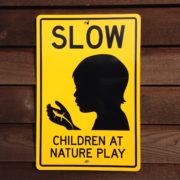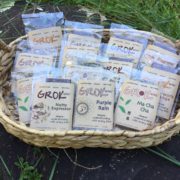When anyone spends time in the great outdoors - exploring, creating and enjoying - there is an impact on the natural world. For when we put ourselves in a delicate ecosystem, we become part of that ecosystem. Some of the ways we do this is tremendous. We may (ahem) plant seeds of understanding and appreciation through exposure and interaction, which foster a lifelong respect for nature. It doesn't get much better than that. But some of how we interact can also be harmful, even in unintended ways. Imagine the last time you went into the woods with kids. Stepping off the path. Taking things home from the forest. Picking up and breaking things open which turn out to be homes for insects or a nutrient-rich decay in process. These explorations affect the ecosystem.
As parents, we want to foster curiosity and a love of the outdoors, but not at the expense of the forest's natural cycle. So, how can we do both?
Leave No Trace
The concept of Leave No Trace, is designed to give us the best of both worlds. At first, I thought it only meant I should take everything I brought into the forest out with me, but there are many other layers to this practice. In turn, these becomes things my growing child and I can talk about and start to do when we enter the forest together.
For Leave No Trace actually have seven principles to it.
01. Plan Ahead and Prepare -
Plan to explore in smaller groups and at lower usage times to minimize foot traffic and disruption to wildlife. Also have the proper tools to bring out what you bring in.
02. Travel and Camp on Durable Surfaces -
Explore on established trails and camp on established sites. Find ways to explain the impact of our footsteps, while still encouraging exploration.
03. Dispose of Waste Properly -
Use the rule of thumb: "Pack it in. Pack it out." Also, when rinsing hands, dishes or other items, steer clear of waterways and use minimal amounts of biodegradable soap.
04. Leave What You Find -
Leave nature in nature. Leave it for others to enjoy and for the forest to use it as it will. Fallen leaves and logs become the source of future forest growth. Their decay is important to the forest.
05. Minimize Campfire Impact -
If creating campfires, keep them in established fire rings, small in size and under control. Know about fire advisories before starting fires.
06. Respect Wildlife -
Keep your distance from wildlife, so as to not disrupt them. Care for food so wildlife cannot access it. Keep your own pets under control.
07. Be Considerate of Other Visitors -
Be mindful of your impact on others and their experience in nature. Space yourself out from other groups, especially when hiking and camping.
Curious Children
It's hard to think about heading into the forest and not stepping off the path or turning over stones or bringing home our finds to create a nature table. Because, the truth is I love all of those things and I love how much my daughter loves those things.
But when I shared these seven principles of Leave No Trace with my daughter, even at the age of four, she took them to heart. She processed the information as much as a four year old could and changed her action to benefit the outdoors without any question. We found that her enjoyment and creativity didn't have to stop, and most importantly, it didn't have to negatively affect the forest to take place at all. And so now when our family is on a hike we're more mindful of how much noise we make. If we see wildlife, we watch it. If it reacts to us, we know we're too close. If she sees something she wants to explore more, we check to see if there is a path leading there. And when she leaves a hike, the sticks she's been carrying around are happily left behind.
Yes, kids explore by diving in, usually with all senses - even taste (parents with kids who have mouths full of dirt, you know what I mean!). But there is so much our children can dive into without having any of those unintended, harmful affects on nature. We can learn so much by observing with our eyes and our ears and our noses when we crouch, when we walk, when we sit or when we run. It may be somewhat restrained, but it also may mean kids come away not just loving the outdoors, but helping it grow, better understanding how it grows and minimizing the impact we have on it.
We play in the forest for all the benefits it gives, and we leave no trace in the forest, for all of the benefits we can give back.



